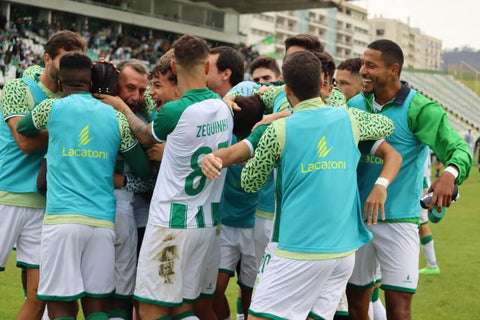Subscribe Us
Subscribe to our newsletter and receive a selection of cool articles every week
Runner's Syndrome: What is it and how is it cured?

Runner's Syndrome also called IT Band Syndrome or Runner's Knee is a inflammation of the iliotibial band due to repetitive rubbing of the tendon of the tensor fascia lata muscle with the outside of the knee.
This injury causes pain, burning and inflammation during the race that increases depending on the kilometers traveled, which is why the main patients who suffer from it are athletes, specifically long-distance runners.

Causes of runner's knee
One way to classify the causes of an injury can be speaking of intrinsic factors (own of the body) or extrinsic (external to the body). In the case of runner's knee, most causes are intrinsic:
- Repetitive rubbing of the iliotibial band against the lateral condyle of the knee.
- Muscle overload.
- IT band that is wider or narrower than anatomically normal.
- Hypotonia (lack of muscle tone) in the external rotator muscles and knee stabilizers (gluteus medius, gluteus maximus, tensor fascia lata, etc.).
- Footprint pronation.
- Pie plano.
- Leg asymmetry.
- Running frequently downhill.
- Running on uneven terrain.
- Inadequate footwear.
- Bad running technique.
- Etc…
How do I know if I have runner's knee?
As we have previously mentioned, the main symptomatology is pain on the outside of the knee which increases as the impacts of our feet on the ground progress. Also, pain increases when running downhill since the tension on the tensor fascia latae muscle is greater in this movement. Once we finish training or we are forced to stop due to the pain caused by said injury, the discomfort usually stops.
However, there are several pathologies with similar symptoms. To differentiate them, we can perform two tests that can help us identify runner's knee and not to confuse it with another lesion:
-
Renne's test
We position ourselves on one leg on the injured limb. Subsequently, we flex the knee to 30-40° and remain in this position for a few seconds. If pain appears, it will let us know that we suffer from iliotibial band syndrome.
-
Ober's test
We lie on our side with the injured leg up (contralateral lateral decubitus) with hips and knees flexed. Next, we perform extension + adduction (bring the knee in) of the hip. If the movement of adduction is limited, it would mean a shortening of the iliotibial band.
What do I have to do to improve the iliotibial band syndrome?
The most important, as with any type of injury, it is act as quickly as possible since the more kilometers we run with a "slight discomfort", the sooner it will become an injury.
First of all, it is advisable to reduce sports activity (which does not mean stop) as this will decrease inflammation of the tendon. This effect will also be achieved with cryotherapy (ice application) in the area of pain. In addition, we must perform strengthening exercises for the gluteus medius, gluteus maximus and the tensor of the fascia lata to prevent our knee from going inwards (knee valgus) during the support phase of the race and thus avoid overloading the outer part of the knee. Addiction, the use of presotherapy will help reduce muscle fatigue, which, as we have seen previously, is one of the factors that causes the iliotibial band syndrome.

If with the above advice our pain has not improved or the improvement is insufficient to continue with our usual sports practice, we should go to the physiotherapist so that we can return to training without pain and, most importantly, not to relapse.
How to prevent runner's knee?
Next, we are going to give you a series of tips so you can prevent runner's knee and thus avoid a break in your training, which may affect the performance of your future competitions:
- Prevent muscle fatigue with a usual leg unloading with the Sizen machine. Thanks to our pressotherapy you will help your muscles to recover quickly since it favors the elimination of lactic acid. In addition, it helps reduce the chances of suffering from certain discomforts and fluid accumulation. Within the four modes that the machine has, modes three and four are the most optimal for preventing sports injuries. Specifically, mode three applies a pulse massage, similar to that performed with the hands, facilitating a deep, complete and rapid muscle recovery. For its part, mode four applies a complete and more intense session through compression and decompression.
- Regular visits to the physiotherapist.
- Strengthening of the external rotator muscles of the hip such as the gluteus medius, gluteus maximus and tensor fascia lata.
- Have a running technique and proper footwear.
- Avoid that most of kilometers traveled are downhill.
- perform a progressive training.
- Respect rest days.
Author
Alice Vicario, physiotherapist and creator of Fisiovik (IG: @fisiovik).
I have studied Sports Sciences and Physical Activity and I specialized in the branch of Health. I worked in a physiotherapy clinic for years as a sports rehabilitator until I finally decided to do physiotherapy.








